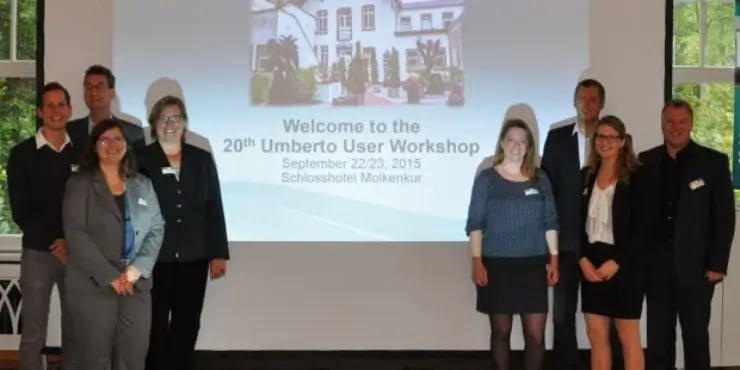A 20th anniversary is often a marked event, so it was fitting that this year’s Umberto User Workshop was held in Heidelberg, the same venue as the first user meeting back in 1996; same room, same company, but with more developed perspectives.
More than forty participants gathered in the city’s idyllic hilltops, overlooking the Neckar river valley, for the two-day workshop event. It provided a prime opportunity to share experience and expertise on the diverse applications of the Umberto software tools across industry, research and consulting projects alike.
With four people still present from the event’s first meeting two decades ago, it was a unique opportunity to reflect on the software’s beginnings and development over the past twenty years. The Umberto tool was founded as the extension of a research project thesis and launched as a first version in 1994, with the intended application to perform corporate eco balances. By the first workshop in 1996, an improved Umberto 2.0 version had been created. It’s interesting to reflect on what has changed, as well as what’s remained the same since then. The Umberto tool functionalities, features and interface have undergone considerable developments with the launch of each new version. Despite the progression of Umberto’s capabilities, it was interesting to discover that the software’s first clients were equally as diverse as they are today; a varied user base of institutes, academia, consultants and industry has defined the development challenge of catering to such diverse requirements.
Challenge does, however, present the opportunity to design something unique—a platform from which the possible applications are boundless. The diversity of presented uses at this year’s Umberto User Workshop was a testament to that. With a nearly equal split in attendees from institutes, academia, consultancy and industrial backgrounds, the presentations and discussions provided the opportunity for all to gain an insight into the work being done in areas they’re often not exposed to in their day-to-day work.





